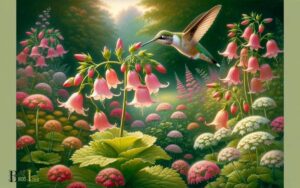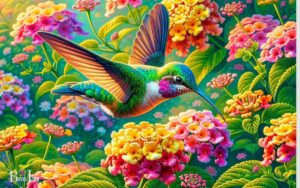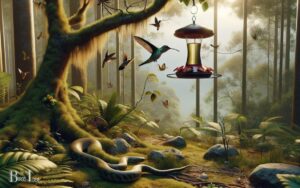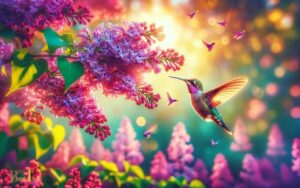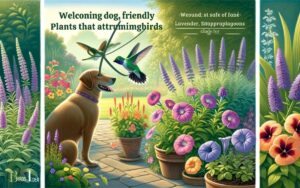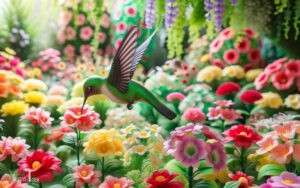Deer Resistant Flowers That Attract Hummingbirds: Discover!
Deer resistant flowers that attract hummingbirds include Bee Balm (Monarda), Columbine (Aquilegia), Lupine (Lupinus), Foxglove (Digitalis), and Salvia (Salvia spp.).
These plants combine the dual benefit of deterring deer while providing nectar for hummingbirds.
The mentioned flowers are not only less palatable to deer but also possess the characteristics that make them irresistible to hummingbirds.
By incorporating these flowers into the landscape, gardeners can achieve a beautiful, vibrant garden that supports local hummingbird populations and remains relatively untouched by deer.
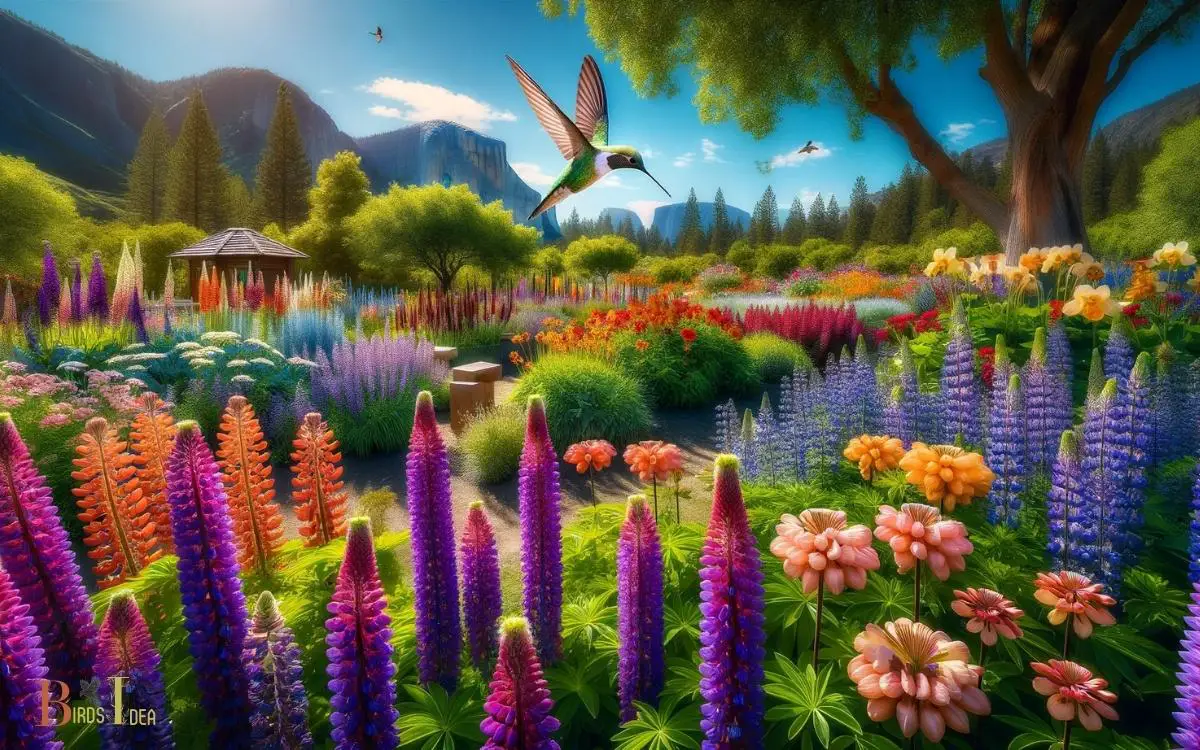
Key Takeaway
Characteristics of Deer-Resistant Flowers
Deer-resistant flowers are characterized by their natural deterrents that discourage deer from feeding on them.
These deterrents can include strong fragrances, bitter tastes, or toxic properties. Some deer-resistant flowers have fuzzy or leathery leaves that deer find unappealing to eat.
Additionally, flowers with thorns or spines are less likely to be consumed by deer. It’s important to note that while no plant can be completely deer-proof, these natural deterrents make them less attractive to deer.
Understanding these characteristics can help gardeners choose the right flowers to keep their gardens beautiful and free from deer damage.
Top Deer-Resistant Flowers for Hummingbirds
Transitioning from characteristics of deer-resistant flowers, gardeners can attract hummingbirds by planting flowers with bright colors and tubular shapes.
To create a hummingbird-friendly garden while deterring deer, consider the following deer-resistant flowers:
- Bee balm (Monarda)
- Salvia
- Cardinal flower (Lobelia cardinalis)
- Columbine (Aquilegia)
- Penstemon
These flowers not only possess the qualities that make them unattractive to deer, but their vibrant colors and tubular shapes are irresistible to hummingbirds.
By incorporating these deer-resistant flowers into the garden, gardeners can enjoy the presence of hummingbirds while minimizing the risk of deer damage.
With careful selection and strategic planning, it’s possible to create a beautiful and wildlife-friendly garden that appeals to both hummingbirds and gardeners alike.
Planting and Maintaining Deer-Resistant Flowers
When it comes to planting and maintaining deer-resistant flowers, there are various options to consider.
Additionally, it’s important to ensure that the garden is maintained in a way that is friendly to hummingbirds and other wildlife.
Creating a landscape that is welcoming to wildlife can enhance the overall beauty of the garden.
Deer-Resistant Flower Options
Gardeners can choose from a variety of deer-resistant flowers that require minimal maintenance to plant and sustain. These flowers not only add beauty to the garden but also help keep deer at bay.
Here are some options to consider:
- Lavender: A fragrant and colorful option that deer tend to avoid.
- Coneflowers: These hardy and vibrant flowers are excellent for attracting pollinators while deterring deer.
- Salvia: Known for its long-blooming and deer-resistant qualities, making it a great addition to any garden.
- Russian Sage: This drought-tolerant plant boasts beautiful purple flowers and is unappealing to deer.
- Black-Eyed Susans: With their bright yellow blooms, these flowers are both deer-resistant and attractive to hummingbirds.
These options provide a range of colors and characteristics to suit different garden preferences while deterring deer.
Hummingbird-Friendly Garden Maintenance
To create a hummingbird-friendly garden while maintaining deer-resistant flowers, it is essential to select and care for appropriate plant varieties.
When choosing flowers, opt for bright tubular blooms such as bee balm, salvia, and penstemon, as they are attractive to hummingbirds and are typically avoided by deer.
Additionally, it’s crucial to maintain a well-kept garden by regularly deadheading spent flowers, removing weeds, and providing adequate watering and sunlight for the plants to thrive.
Below is a table showcasing some deer-resistant flowers that are also hummingbird-friendly:
| Flower | Sunlight | Watering |
|---|---|---|
| Bee Balm | Full sun | Moderate |
| Salvia | Full sun | Low |
| Penstemon | Full sun | Low |
Creating Wildlife-Friendly Landscapes
Creating a wildlife-friendly landscape with deer-resistant flowers involves selecting and maintaining plant varieties that not only deter deer but also attract hummingbirds.
To achieve this, gardeners can consider the following tips:
- Choose deer-resistant flowers that are also attractive to hummingbirds, such as bee balm, columbine, and foxglove.
- Implement natural deer deterrents like fencing, thorny shrubs, and strong-scented plants to protect the garden.
- Create a diverse garden with a variety of flower colors, shapes, and bloom times to appeal to hummingbirds.
- Regularly maintain the garden by removing wilted flowers, controlling pests, and providing a water source for visiting wildlife.
- Stay informed about local wildlife habits and preferences to enhance the garden’s appeal to both hummingbirds and deer.
Designing a Deer-Resistant Hummingbird Garden
When designing a deer-resistant hummingbird garden, it’s essential to carefully select flowers that are both appealing to hummingbirds and unattractive to deer.
Hummingbirds are attracted to brightly colored, tubular flowers with sweet nectar, while deer tend to avoid plants with strong scents, fuzzy or spiky leaves, and prickly stems.
Here are some deer-resistant flowers that attract hummingbirds:
| Flower | Deer-Resistant Features |
|---|---|
| Bee Balm | Strong minty scent |
| Salvia | Aromatic foliage |
| Columbine | Delicate appearance |
| Penstemon | Tubular blossoms |
Additional Tips for Attracting Hummingbirds
Attract more hummingbirds to your garden by strategically placing multiple feeders in different areas to provide ample nectar sources.
Here are some additional tips for attracting hummingbirds:
- Plant a variety of nectar-rich flowers that bloom at different times throughout the season to provide a continuous food source for hummingbirds.
- Incorporate native plants into your garden to attract local hummingbird species.
- Provide perches near the feeders to give hummingbirds a place to rest and survey their surroundings.
- Keep the feeders clean and the nectar fresh to ensure the health of visiting hummingbirds.
- Minimize the use of pesticides in your garden to create a safe and natural environment for hummingbirds to thrive.
Conclusion
Deer-resistant flowers that attract hummingbirds are a great addition to any garden. Did you know that a single hummingbird can visit up to 1,000 flowers in one day?
By planting and maintaining deer-resistant flowers, you can create a beautiful and wildlife-friendly garden that will attract these fascinating birds and provide them with a safe and inviting environment to thrive.

